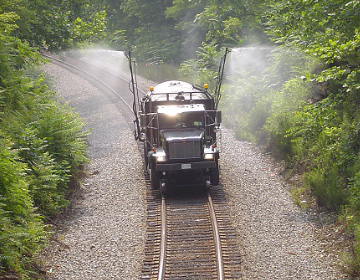The weeds are growing! Close to $1 billion was spent around the globe on industrial vegetation management (IVM) applications in 2013. That is the exciting news emerging from the recently completed Global Industrial Vegetation Management of Pesticides and Fertilizers: Market Analysis and Opportunities study from globally recognized consulting and market research firm Kline & Company.
The IVM market is about controlling weeds. When weeds grow, they impede such activities as moving electricity across power lines, keeping grazing lands available to fatten cattle, keeping highways and railroad lines safe for passenger and freight traffic, replanting harvested forest land, and maintaining inland water bodies so they are clean, safe, and available for recreation.
This type of weed control is steady and has shown moderate growth over the last decade. The fact that weeds are carried from one place to another by weather and birds, as well as the importance placed on invasive species control in recent years, have all created growth opportunities in this billion dollar market.
The leading countries practicing in industrial vegetation management are the United States, Brazil, Australia, and Japan. The largest end-use segment globally is range and pasture, representing about 40% of total sales to the IVM segment, followed by right-of-way (ROW) management accounting for an estimated 35% of the total.
“If it is true that ‘slow and steady wins the race,’ then IVM looks like a winner for the companies that have positioned their products in this evolving segment,” according to Dennis Fugate, Industry Manager for Specialty Pesticides at Kline & Company.
“Despite its steadiness, the segment has shown that new active ingredients that meet the needs of end users can capture major share alongside combinations of older actives that characterize most of the IVM sector,” adds Fugate. Milestone, based on Dow’s aminopyralid, has increased its share of the U.S. market every year that Kline has studied it. In the last decade, Milestone has more than doubled its share. Because it is highly effective and has application characteristics that meet safety and environmental needs, the product continues to garner share of the market that is increasingly conscious of its impact on the soil and water.
This growth has come in the face of a segment that has turned in part toward generic versions of long-standing brands, creating price competition that would tend to thwart a new product without the right fit. This phase is coming to an end as new chemistry based on selectivity of weeds controlled is entering the segment.
The primary players in this sector include Dow AgroSciences, Monsanto, DuPont, BASF, with generic producers Nufarm and Makhteshim Agan (Alligare) picking up share in recent years. DuPont recently announced the sale of its IVM products in select countries (including the United States and others) to Bayer, which will shift the balance somewhat among the second and third leaders.
It is a sector that has successfully faced challenges and keeps on growing. Find out more about this steady market with Kline’s recently published Global Industrial Vegetation Management of Pesticides and Fertilizers: Market Analysis and Opportunities report, which examines global IVM, including the invasive weed market for pesticides and fertilizers, focusing on key trends, developments, changes, challenges, and business opportunities.

